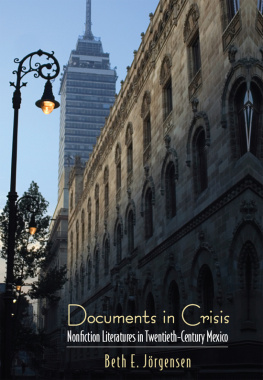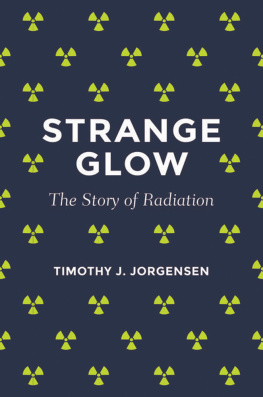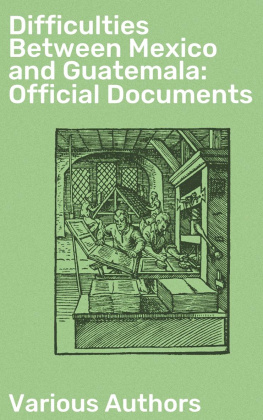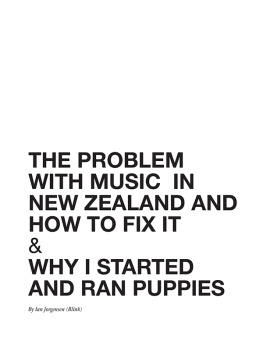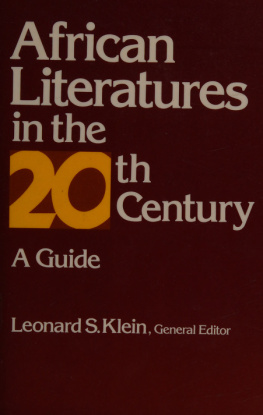Jorgensen - Documents in Crisis Nonfiction Literatures in Twentieth-Century Mexico
Here you can read online Jorgensen - Documents in Crisis Nonfiction Literatures in Twentieth-Century Mexico full text of the book (entire story) in english for free. Download pdf and epub, get meaning, cover and reviews about this ebook. City: Mexiko, year: 2014, publisher: State University of New York Press, genre: Romance novel. Description of the work, (preface) as well as reviews are available. Best literature library LitArk.com created for fans of good reading and offers a wide selection of genres:
Romance novel
Science fiction
Adventure
Detective
Science
History
Home and family
Prose
Art
Politics
Computer
Non-fiction
Religion
Business
Children
Humor
Choose a favorite category and find really read worthwhile books. Enjoy immersion in the world of imagination, feel the emotions of the characters or learn something new for yourself, make an fascinating discovery.
- Book:Documents in Crisis Nonfiction Literatures in Twentieth-Century Mexico
- Author:
- Publisher:State University of New York Press
- Genre:
- Year:2014
- City:Mexiko
- Rating:4 / 5
- Favourites:Add to favourites
- Your mark:
- 80
- 1
- 2
- 3
- 4
- 5
Documents in Crisis Nonfiction Literatures in Twentieth-Century Mexico: summary, description and annotation
We offer to read an annotation, description, summary or preface (depends on what the author of the book "Documents in Crisis Nonfiction Literatures in Twentieth-Century Mexico" wrote himself). If you haven't found the necessary information about the book — write in the comments, we will try to find it.
Documents in Crisis Nonfiction Literatures in Twentieth-Century Mexico — read online for free the complete book (whole text) full work
Below is the text of the book, divided by pages. System saving the place of the last page read, allows you to conveniently read the book "Documents in Crisis Nonfiction Literatures in Twentieth-Century Mexico" online for free, without having to search again every time where you left off. Put a bookmark, and you can go to the page where you finished reading at any time.
Font size:
Interval:
Bookmark:
SUNY series in Latin American and Iberian Thought and Culture
Jorge J. E. Gracia and Rosemary Geisdorfer Feal, editors
Documents in Crisis
Nonfiction Literatures in Twentieth-Century Mexico
Beth E. Jrgensen

Published by State University of New York Press, Albany
2011 State University of New York
All rights reserved
Printed in the United States of America
No part of this book may be used or reproduced in any manner whatsoever without written permission. No part of this book may be stored in a retrieval system or transmitted in any form or by any means including electronic, electrostatic, magnetic tape, mechanical, photocopying, recording, or otherwise without the prior permission in writing of the publisher.
For information, contact State University of New York Press, Albany, NY
www.sunypress.edu
Production by Eileen Meehan
Marketing by Michael Campochiaro
Library of Congress Cataloging-in-Publication Data
Jorgensen, Beth Ellen.
Documents in crisis : nonfiction literatures in twentieth-century Mexico / Beth E. Jrgensen.
p. cm. (SUNY series in Latin American and Iberian thought and culture)
Includes bibliographical references and index.
ISBN 978-1-4384-3939-6 (hardcover : alk. paper)
1.Mexican prose literature20th centuryHistory and criticism. 2. Literature and history. 3. MexicoHistory20th centurySources. 4. MexicoHistory20th centuryHistoriography. 5. AutobiographyMexican authorsHistory and criticism. 6. History in literature. I. Title. II. Title: Nonfiction literatures in twentieth-century Mexico.
PQ7118.J67 2011
860.9'9720904dc22 2011005035
10 9 8 7 6 5 4 3 2 1
Acknowledgments
I would like to thank a number of colleagues who share my interest in both nonfiction modes of literature and Mexican literature and culture, and who have encouraged my own research and writing through their scholarly work and their friendship. Ignacio Corona's invitation ten years ago to co-edit the volume The Contemporary Mexican Chronicle led to a deeper engagement with the theory and practice of the chronicle, as well as opening up connections to the wonderful group of contributorschroniclers and scholarswho made our volume possible. Other colleagues near and far have generously included me in projects that allowed me to develop different aspects of my work on Mexican nonfiction literatures. Mary Long, Linda Egan, Ryan Long, Nuala Finnegan, and Jane Lavery are at the top of that list of valued intellectual collaborators.
These acknowledgments would not be complete without thanking two remarkable women: Elena Poniatowska for her writing and for the support and friendship that she has extended to me since I first met her three decades ago, and Rosemary G. Feal for the work that she does at the MLA to benefit our entire profession and the mentoring that she generously provides to so many individuals.
Finally, my familyPaul, Megan, and Benalways keep me going and make the journey a true adventure.
Introduction
More than twenty-five years ago when I first read Elena Poniatowska's highly acclaimed book Hasta no verte, Jess mo, I read it rather unproblematically as a novel. That is, I read it as a work of fiction, which I took to mean that its narrated world, while it might have a connectioneven an easily recognizable oneto what we call reality, did not bear any particular responsibility to that reality. As a novel, its story could not be held up for scrutiny or subjected to a process of verification concerning the accuracy of its information or its claims about the present or the past. The format and the marketing of Poniatowska's book, and the narrator-protagonist's improbable opening salvoEsta es la tercera vez que regreso a la tierra (9) [This is the third time that I have returned to earth]invited its reading as a work of imaginative literature, autonomous from the real world and employing language and literary conventions to inscribe its own internal logic and coherence. My role as a reader was to discern and to enjoy the textual construction of character, dialogue, place, time, and action as a process of making meaning through storytelling. However, I was soon to discover that other readers, better informed than I about how the book had been conceived and written, were examining it as a true-life story, a testimonio within the tradition of contemporary Latin American writing. While I was preparing to undertake an analysis of Hasta no verte, Jess mo as a work of fiction, others were busy debating to what degree the published text was faithful or responsible to the interviews that Elena Poniatowska had carried out with a living, identifiable womanknown, albeit mistakenly, by the name of Jesusa Palancares. At stake was an argument over whether to classify the text as a testimonio or a novel, or perhaps a testimonio novelado.
I have told the story of the multiple critical readings of Hasta no verte, Jess mo in my book The Writing of Elena Poniatowska: Engaging Dialogues, and I will not reiterate that work here. an exception that proved that nonfiction writing comprised a field of research with ample room to roam and to explore.
The most acknowledged foundational account of the difference between fiction and nonfiction in the Western literary and philosophical tradition is the passage in Aristotle's Poetics in which he distinguishes between poetry and history writing. It also follows from what has been said that it is not the poet's business to relate actual events, but such things as might or could happen in accordance with probability or necessity. A poet differs from a historian, not because one writes verse and the other prose but because the historian relates what happened, the poet what might happen. This is why poetry is more akin to philosophy and is a better thing than history; poetry deals with general truths, history with specific events (18). This passage gives the basic criterion upon which our culture's commonsense notion of fiction and nonfiction is still grounded today: the difference between telling general truths or what might happen, and relating actual events. Across the centuries, it has proved to be a durable distinction that readers and writers continue to employ in the process of creating, receiving, classifying, and interpreting the verbal and visual texts that surround us.
At the same time, in the twentieth century, certainly, and even much earlier, this convenient and apparently natural distinction has been a highly contested issue in Western theories of representation. In the past one hundred years, the boundaries between fiction and nonfiction, the nature of facts, the relationship between linguistic representation and the lived reality it might claim to imitate, and the status of knowledge-producing discourses including the quantitative and the human sciences, have been subjected to an intense process of critical scrutiny. Modern linguistics and the transformations that it has inspired in the study of all aspects of human society and culture, have created a deep skepticism regarding what we know about the world and how we know it. This skepticism toward the reliability of knowledge and the attainability of truth is in constant tension with an equally urgent desire and need for what we can consider to be accurate knowledge about past and present realities outside of our immediate experience. I believe that the tension between our desire to know and our skepticism toward how knowledge is produced and organized in language is particularly acute in our reading of nonfiction texts, and in this book I examine a number of narratives produced across a century of Mexican literature in order to explore the distinction of nonfiction as a practice of writing and reading. The first chapter of the book treats a variety of theoretical approaches to key concepts in the discussion of nonfiction writing, concepts that are useful for formulating questions and strategies for the textual analyses in the chapters to follow. In this introduction, however, I wish to establish the continuing relevance of the fiction/nonfiction binary, however contested it is, for contemporary readers.
Next pageFont size:
Interval:
Bookmark:
Similar books «Documents in Crisis Nonfiction Literatures in Twentieth-Century Mexico»
Look at similar books to Documents in Crisis Nonfiction Literatures in Twentieth-Century Mexico. We have selected literature similar in name and meaning in the hope of providing readers with more options to find new, interesting, not yet read works.
Discussion, reviews of the book Documents in Crisis Nonfiction Literatures in Twentieth-Century Mexico and just readers' own opinions. Leave your comments, write what you think about the work, its meaning or the main characters. Specify what exactly you liked and what you didn't like, and why you think so.

